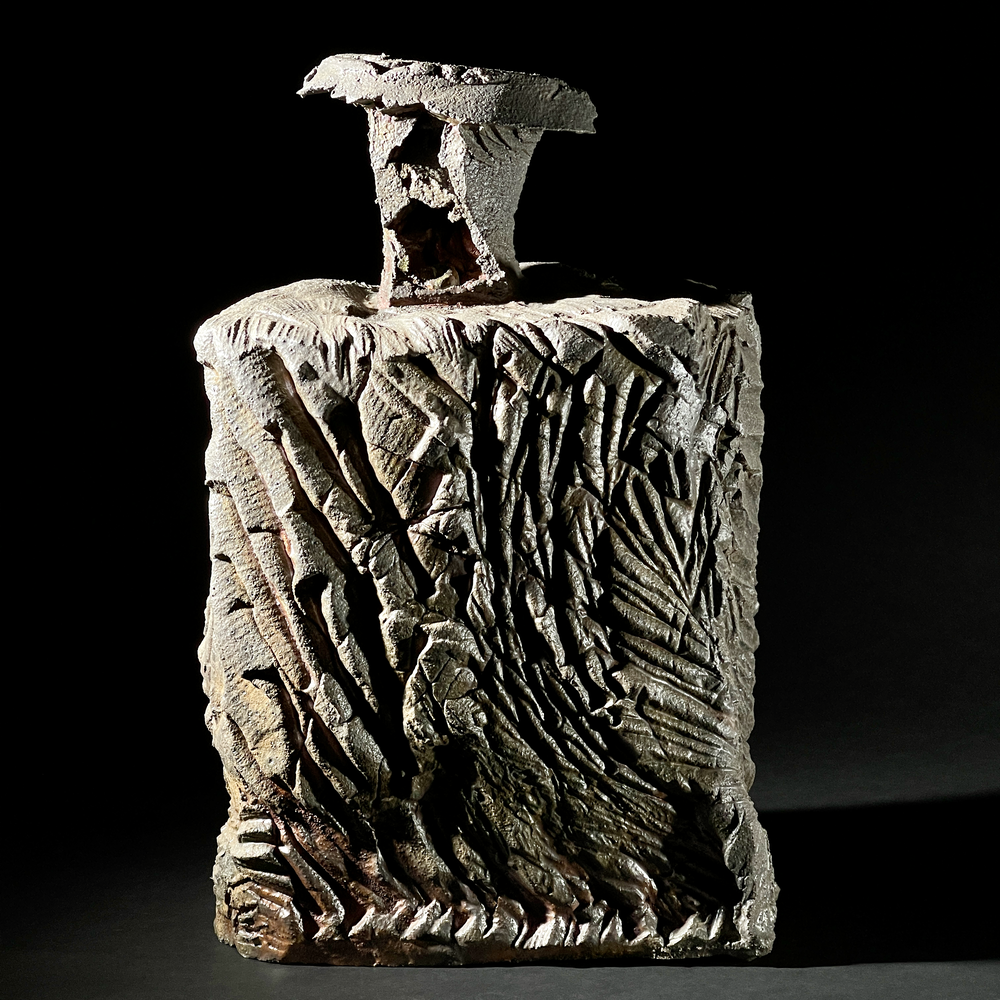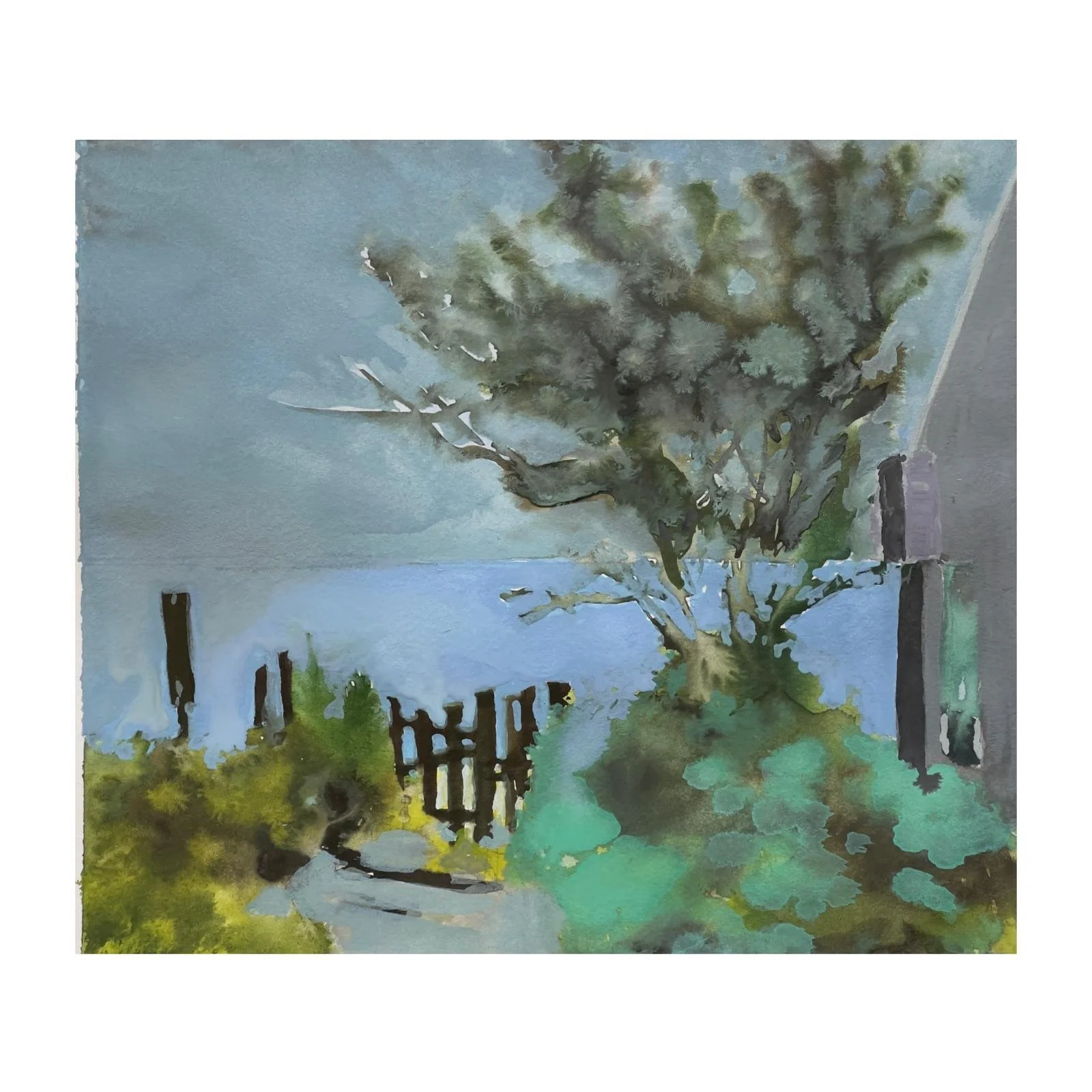The Slow Dissolve: by Rafe Pasquini
In a world that is constantly trying to keep up with trends, Auguste Elder creates art at a deliberate, meditative pace. An artist deeply concerned with the passage of time, entropy, and the slow erosion of form, Auguste’s work is both an exploration and a resistance—a way to capture the inevitability of decay while resisting the rushed tempo of modern life. Through photography, pottery and many other art forms, Auguste has cultivated a body of work that is less about keeping up and more about digging in, uncovering the philosophical undercurrents of existence.
Auguste's creative roots stretch back to early childhood. At just three years old, he told his mother he wanted to be an artist. It wasn’t just a childish whim. His family nurtured his desire—his father and grandfather were both involved in photography, surrounding him with cameras, visual storytelling, and a tacit understanding of the power of observation. Art was not an escape, but a language, something embedded in his DNA. It wasn't until his senior year of college, though, that he seriously considered the path of an artist. While interning as a teaching assistant for a professor, Auguste experienced a turning point. The act of sharing knowledge, engaging critically with work, and seeing students discover their voices reaffirmed the significance of his own creative journey.
When asked to define his style, Auguste hesitates to box it in. His work resists easy classification, evolving as he evolves. But there are patterns, motifs, and processes that speak to the core of his vision. He describes his creative approach as a slow unfurling—an idea often starts as a fragment, a whisper of form or feeling, and then grows through layered experimentation. He emphasizes patience, often allowing pieces to sit and “age” before finalizing them. This slow-burn methodology is not a lack of discipline, but a philosophical stance: Auguste sees his art as a conversation with time, where erosion is not failure, but form.
Central to this philosophy is his guiding theme: entropy. Rather than shy away from the inevitability of breakdown and decay, Auguste embraces it. His unified theory of art rests on this very concept—the way things age, the way they fall apart, and in doing so, reveal something essential. His pieces don’t just represent objects or ideas; they carry the texture of impermanence. They ask viewers to reckon with time, to look closely at the crumbling edges and shifting boundaries. Auguste’s work, in this sense, is as much about observation as it is about creation. Of course, the path of a deliberate artist in a fast-paced world is not without its challenges. Auguste admits that the slow process can sometimes be frustrating, but he refuses to compromise for speed. He doesn’t seek validation from a culture that values immediate results. His measure of success is internal—grounded in growth, curiosity, and integrity. That quiet resistance is part of what makes his work powerful. It forces viewers to slow down and sit with discomfort, to appreciate complexity without craving resolution.
Currently, Auguste is working on projects that continue to explore these themes—often involving mixed media experiments and analog photography. Though he keeps many future projects close to the chest, he expresses excitement for opportunities that allow deeper exploration into materiality and transformation. As for dream projects, Auguste aspires to create large-scale installations where time itself becomes a medium—works that physically shift and degrade over days, weeks, or months, inviting viewers into the ongoing process rather than presenting a fixed end result. He currently has an open exhibit with Cavin-Morris Gallery where he has been given an opportunity to show off his outstanding work. “Auguste Elder is a contemporary ceramic artist whose work blends traditional craftsmanship with a deeply conceptual approach to form, texture, and narrative”, the gallery describes him, “Auguste’s work is characterized by its exploration of identity, memory, and the passage of time. His forms often blur the boundaries between sculpture and functional pottery, incorporating organic shapes and textured surfaces that evoke both the natural world and abstract symbolism”. When I asked Auguste about the work at his gallery, the one he was most excited about was the one he describes as two fists/arms coming together in unity. It was the one he felt most exemplified his work and the message he tries to convey.
To emerging artists, Auguste offers advice rooted in passion and purpose. “If you’re not excited about making work—or about other people’s work—don’t rush to get into the field,” he cautions. Art, to him, is not a trend to follow but a question to live with. He warns against chasing aesthetics or popularity. Trends are fleeting, and chasing them will always leave an artist a step behind. Instead, he advises young creatives to “dissolve slowly into your work.” Let the process absorb you. Let the questions linger. Let the materials guide you. Auguste believes that art should be born of curiosity and sustained through struggle. When things get hard, Auguste returns to the work itself. It is the making that sustains him. Each piece is a meditation, an opportunity to look again, to try again, to think more deeply. The slow erosion, the entropy he so often captures, also becomes a source of strength. In decay, there is honesty. In slowness, there is depth.
On a more personal note, I want to talk about my own experience with Auguste. Coming into high school I was not a big fan of art, I found it as something that I just wasn’t good at and a class I would show up to, not work too hard and get the easy grade. That was until I had a class with Auguste. I ended up taking multiple different art classes with Auguste that included a variety of different art forms. One of my favorites was a pottery class. It was my first time doing pottery and working on a wheel, but Auguste was extremely helpful and helped me see the progress I made over the course of the class. At the end of the year he decided to traumatize me by dropping one of his pieces on the floor and watched it shatter everywhere, which is something he likes to bring up everytime I see him. After that class, I decided I wanted to take as many art classes with Auguste as possible, even including an Art of Tea class that quickly became one of my favorite classes I took during my time in high school. Overall Auguste was one of the best teachers I had during high school and changed my view of art.
Auguste’s work can be found in select galleries, online showcases, and community exhibitions that value experimental and time-based art. But perhaps more than any particular piece, it is his ethos that lingers. In a world racing toward the next big thing, Auguste Elder reminds us to slow down, to witness, and to consider what remains when everything else fades. -Rafe Pasquini, 2025.
Image: Provincetown, MA. Watercolor. Auguste Elder, 2025.

